When buying a parrot at a pet store or with a hand, any owner wants to get as much information as possible about his new pet. First of all, the buyer is interested in the gender and age of the bird. The younger the bird, the faster it will get used to the new owner and learn to talk. If you take a bird at a young age, it will delight the household with its society for many more years.
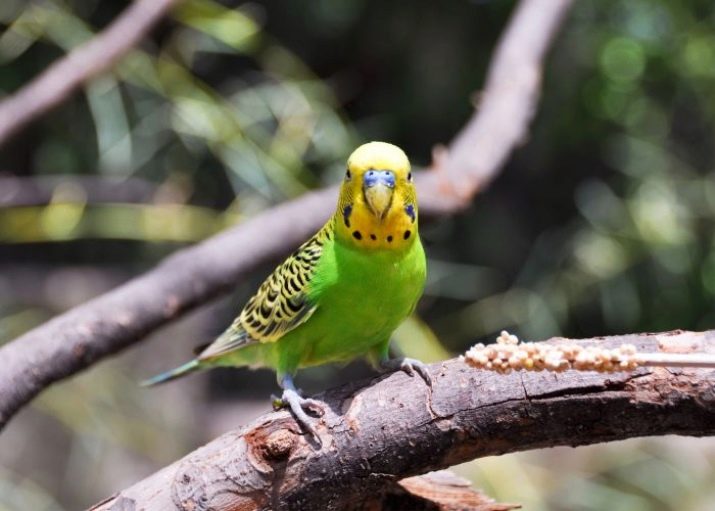
When buying a pet from professional breeders, you can find out the age of the bird by the ring on the foot. It contains data on the year of birth, nursery name, country. Breeders ring parrots at the age of 9 days, so in this case there is no doubt in the reliability of the information. You also need to make sure that the ring is solid, otherwise there is a risk of running into scammers who have clamped the ring on the foot of an adult parrot and are trying to sell it under the guise of a chick.
It is worth noting that the seller may hide information about his true age or simply not provide it.
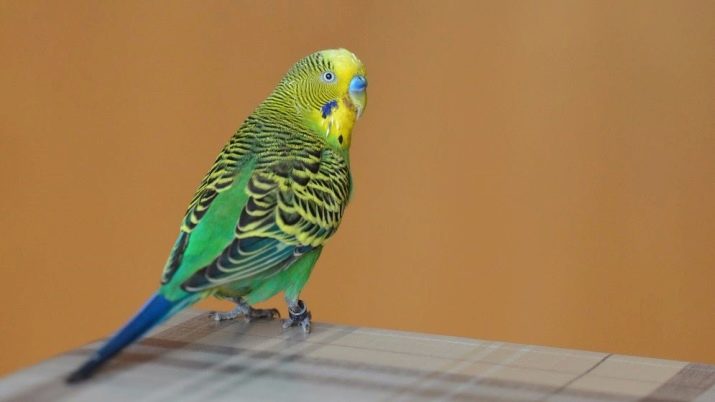
How many live?
Budgies cannot be called centenarians compared to other pets - the age of the parrot usually does not exceed 10 years. There are individuals who live up to 15 years, and champions in longevity even reach “adulthood”, however, such cases are more likely an exception. If we conditionally compare a bird with a person, then by human standards, a one-year-old feathered is, in fact, like a 10-year-old child.
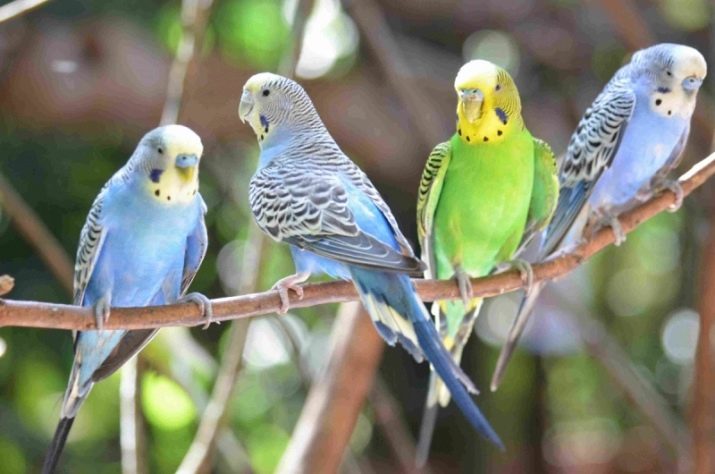
In order for the parrot to live in the family longer, you need to follow the simple rules for bird care: feed well, keep the cage clean, monitor the health of the pet.
Be sure to let him fly around the apartment, having previously closed all the doors and windows. When buying a wavy friend, you should pay attention not only to the age of the bird, but also to its state of health.
If the seller’s words made me doubt, then you need to look at the parrot and determine its age yourself.
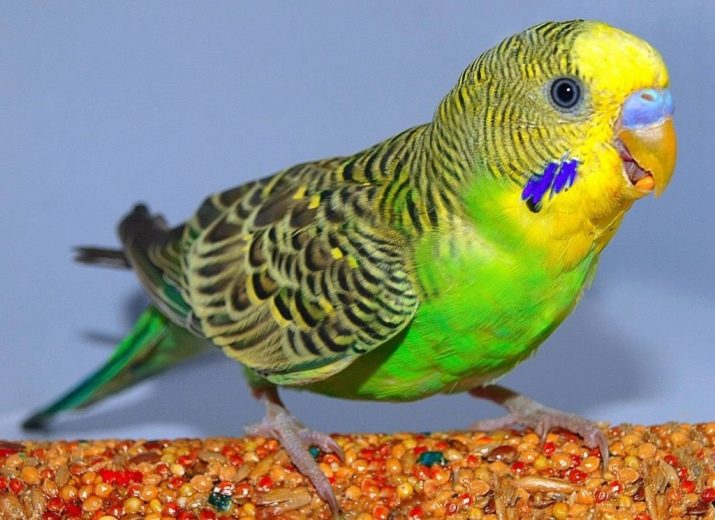
Young individuals are characterized by better adaptation to a new habitat and activity. Young birds learn better, become tame faster and are not afraid of their owners. In stores, as a rule, there is not enough sunlight, and the cheapest brands are offered for food, therefore, living in such conditions for too long, the parrot can lose physical shape.
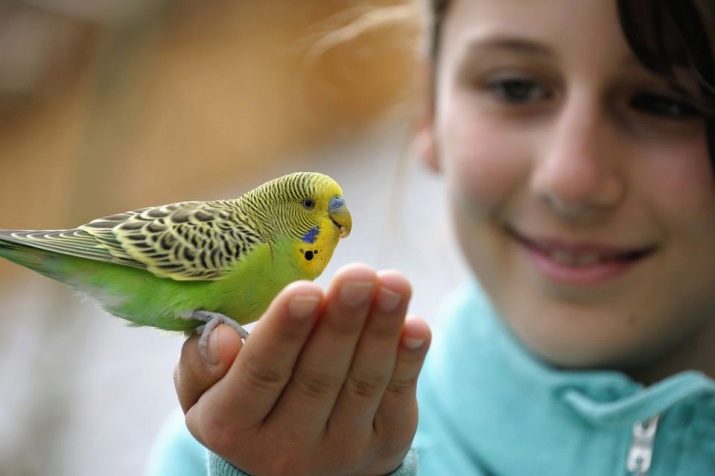
Some breeders are of the opinion that taking too young a chick is not recommended, because in this case the owner may have difficulty with food. It is best to take a chick at the age of five months - he is already quite old to easily adapt to a new home.
With feeding such babies usually there are no difficulties, and this age is optimal for training this age. Others believe that it is better to buy a parrot at the age of a month when it tries to make its first flights and explore the surroundings.
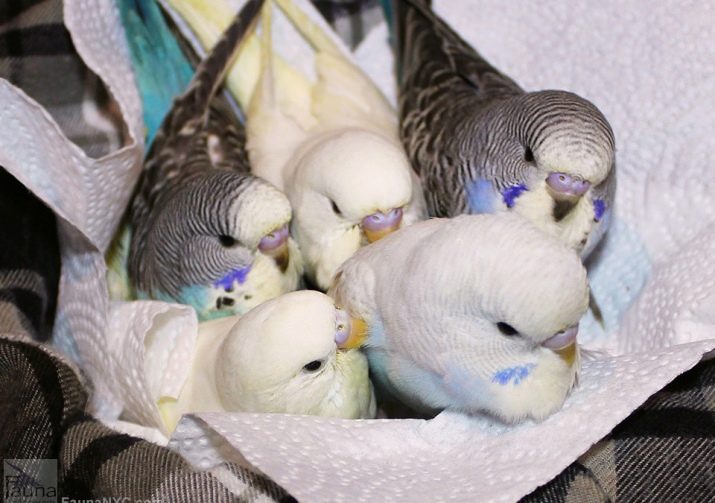
How to determine the age?
The first molt of parrots usually begins at the age of three to four months. After this time, the parrots change less and less, and then finding out their exact age becomes much more difficult.
Looking at some birds, you can easily determine how old they are. But this does not happen in all cases. There are special tables to find out the age of an individual. The following describes signs that distinguish a young parrot from an old one.
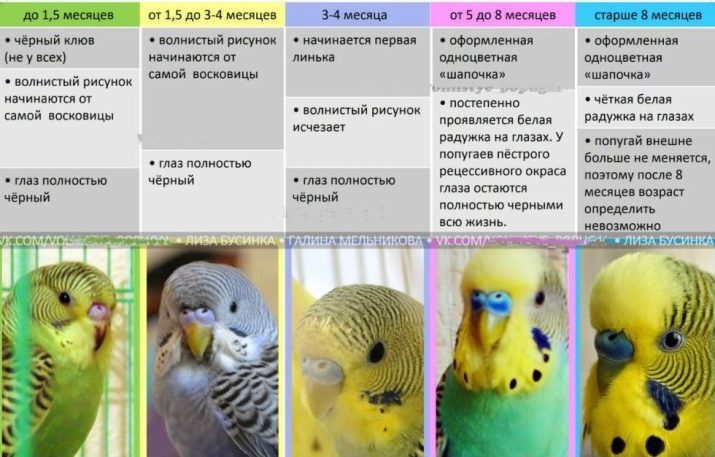
In the eyes
Young chicks differ in that their eyes are completely black, that is, devoid of the iris. This means that this individual has not yet turned five months old. However, this method does not give a 100% guarantee. In some cases, the eyes change color by only 10 months.
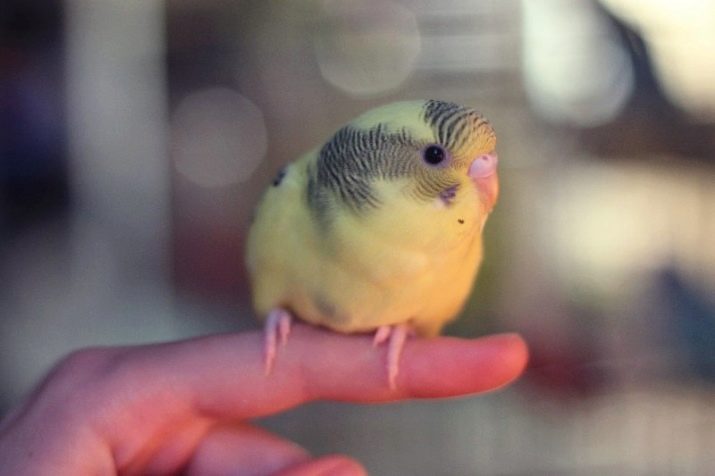
Voskovitsa
Another detail that you should pay attention to when choosing a parrot is a waxwort. It reflects the degree of maturity of the chick, and its color may vary depending on the gender of the individual.
The beaks of females are decorated with a pink, blue or beige wax, and with age it acquires a brown color. In males, this part of the body remains pink-violet or blue for life, but nevertheless over time it acquires a darker shade. Experienced breeders can easily correlate color depth and male age.
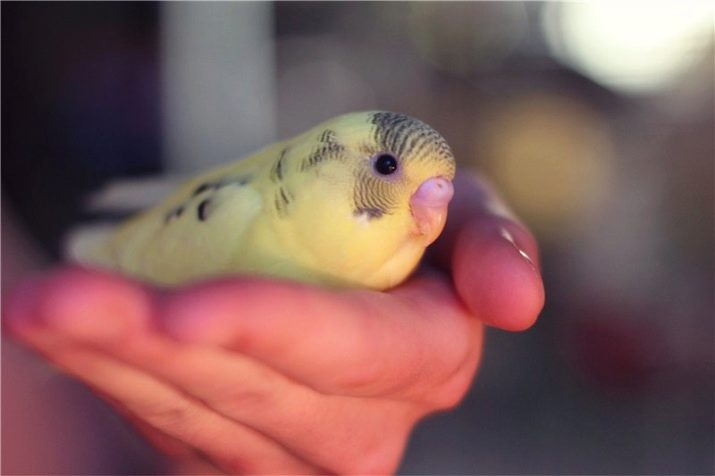
Paws
The skin of the legs also changes color during the life of the parrot. In babies, it is smooth, and in adult birds it has distinguishable scales, loses elasticity. If it is damaged, then this may indicate the presence of diseases.
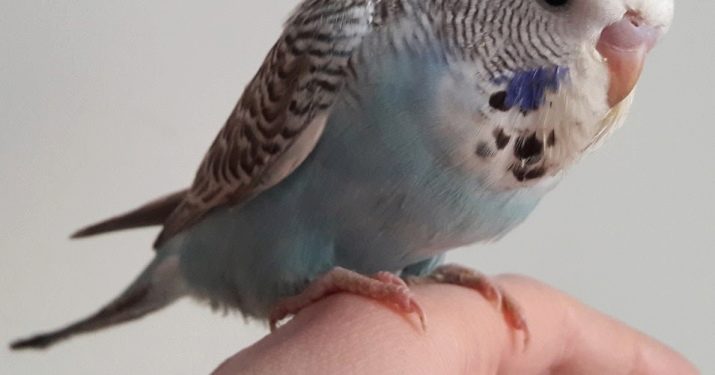
Tail
Many breeders look at the age of the bird's tail. Since this part of the body acquires more slowly than others, the length of the tail is an important sign of the age of the feathered. Usually the longer it is, the more years its owner. However, in some cases, the tail of an adult may be shortened due to external factors or due to active molting. There are also parrots who like to pluck feathers from their tail themselves.
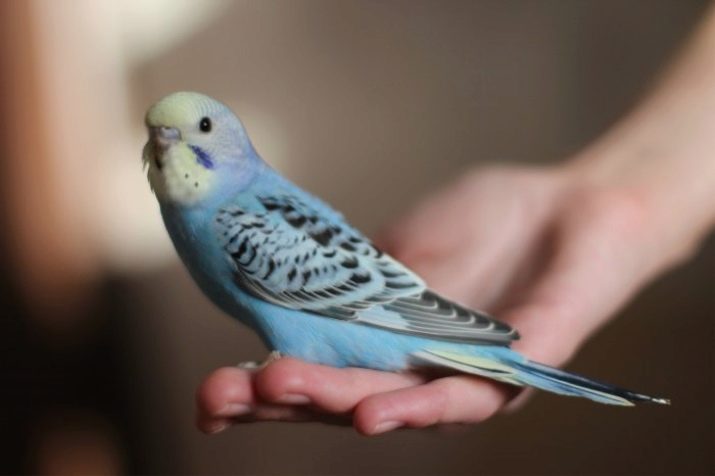
Beak
In babies, the tip of the beak is black, a month later spots and stains may appear on it. In most cases, it completely turns black. But mature individuals have a plain yellow-green beak.
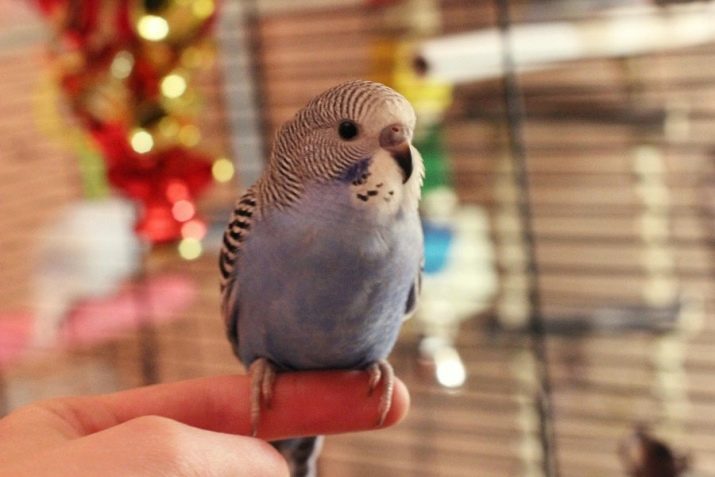
Plumage
Feathers on the back, tail and wings appear in the third week after birth. The parrot gains full feather cover by the age of one month. Living in natural conditions, they gain the ability to fly out of the nest. At home, wavy friends are also not averse to practicing flights, while the main thing is to ensure safety: not to open windows and doors at such moments, to monitor the actions of the baby.
Before the first molt, dark stains adorn the head of the chick, then they are replaced by a plain “hat”.By six months, the chick can already boast of an adult bright color, he has a mask characteristic of a budgie. In older individuals, the color of the color fades, and feathers almost disappear around the eyes.
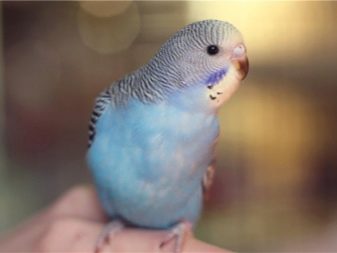
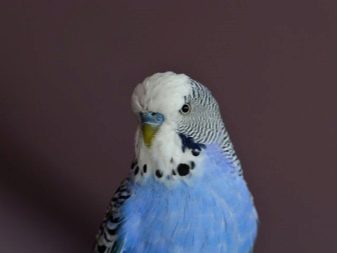
Body size
This indicator is directly related to the length of the tail. On average, adult birds have a total body length of 18 cm.
Spots on the neck
The shape of the spots in the throat area of each parrot has its own, but there is a common moment for all birds: with age, their outlines become more vague, not as contrasting as those of young counterparts.
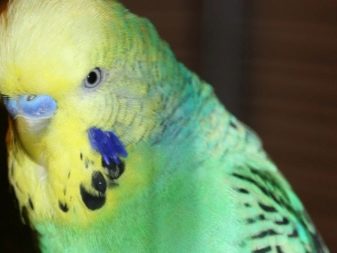
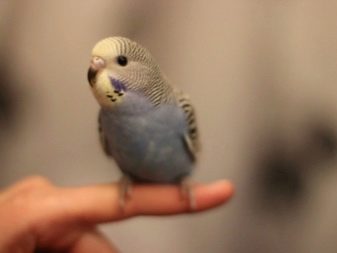
Kinds
Among wavy households there are birds with an unusual color, whose age is more difficult to determine. The reason for this coloring is the presence of mutations. Because of them, the amount of pigments common for plumage is disturbed, which affects the appearance of the pet. This is not a disadvantage of the bird - on the contrary, many people like parrots of such unusual colors, and they are happy to choose them among their relatives.
Popular varieties of such parrots:
- albino and lutino;
- recessive-motley individuals;
- parrots.

Albino - birds, in the color of which there are no pigments such as melanin and psittacin. In cases where the individual did not get melanin, but there is psittacin, a pure yellow plumage and red eyes are obtained - this is the color of lute. Eye color remains scarlet all his life, so this method of determining age is not applicable to them.
The only thing you can pay attention to is the heterogeneity of color. With age, the iris begins to stand out, which also has a red color, but slightly lighter than the pupil. To see the difference, you have to look very carefully.

Recessive motley individuals can be blue and green, but their color is 50% white. The color of the parrots resembles the usual, but its blue or green color is much paler than usual. If we talk about boys, then their wax does not darken throughout life, as in albino and lutino. But in girls, it becomes brown or dark beige by the age of six months.
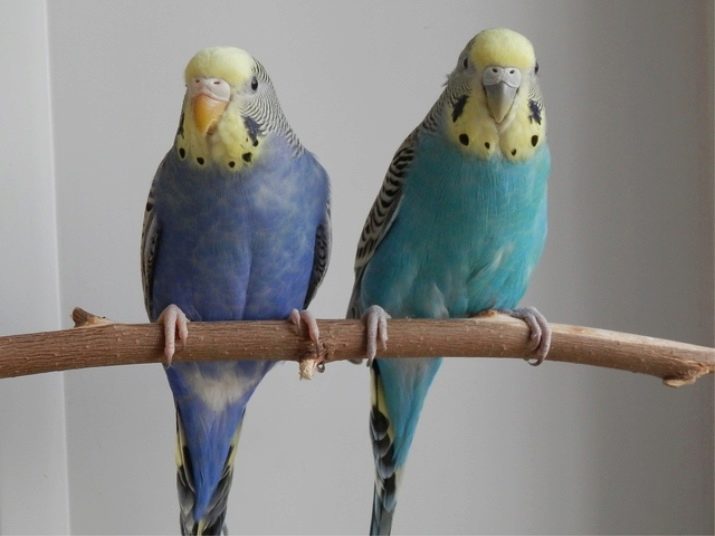
When purchasing a budgie, the new owner wants him to please him with his presence as long as possible, because the sudden loss of a pet can bring a lot of grief to all households. Determining the age of a young healthy bird is not so difficult.
The main thing is to be guided by your observations on her appearance. Thanks to them, you can understand whether the seller accurately named the age of the parrot that you need to buy. In the case of lutino and albino, finding out how many months or years a bird is even more difficult, so you need to look for trusted sellers and breeders - they value their reputation and will not conceal the true age of the chick.
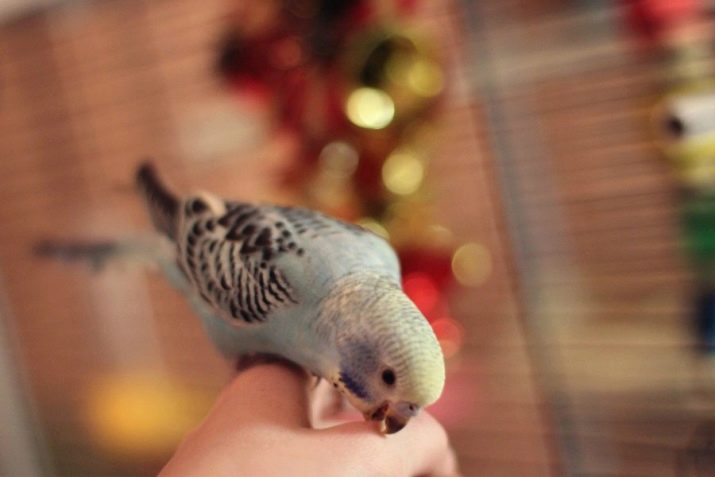
You can learn more about how to determine the age of a parrot.










